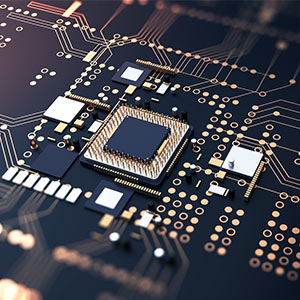Printed Circuit Board Assembly (PCBA) has come a long way since its inception, and it continues to evolve at a rapid pace. With technological advancements and innovations driving the electronics industry, PCBA has become an integral part of modern-day electronics manufacturing. From smartphones to medical devices and industrial equipment, PCBA is the backbone of the electronic devices we use in our daily lives.

In recent years, the demand for faster, smaller, and more efficient electronic devices has increased dramatically. As a result, the need for PCBAs that can support these devices has become more critical than ever. The increasing demand for PCBAs has fueled the growth of the electronics industry and has led to the emergence of new technologies and manufacturing techniques.
The Future of Printed Circuit Board Assembly:
With the rapid advancements in technology, it's safe to say that the future of PCBA is bright. The increasing demand for consumer electronics, medical devices, and other high-tech products will continue to drive the growth of PCBA. However, the future of PCBA involves much more than just meeting the current demands of the market.
The advent of the Internet of Things (IoT) has opened up new opportunities for PCBA. By connecting everyday devices to the internet, IoT has the potential to revolutionize the way we live, work, and communicate. However, to achieve this, the IoT devices require low-power consumption, small footprint, and robust connectivity. These requirements demand a new generation of PCBAs that can support IoT applications. The future of PCBA will see widespread adoption of new materials and technologies, such as flexible PCBs, nanotechnology, and 3D printing.
Challenges in Printed Circuit Board Assembly:
Despite the promising future of PCBAs, there are still some challenges that need to be addressed. One of the significant challenges is the increasing complexity of PCBAs. As the demand for smaller and more efficient devices increases, PCBAs become more complex and challenging to manufacture. The manufacturing process needs to be precise, efficient, and cost-effective to meet the demands of the market.
Another challenge facing the PCBA industry is the shortage of talent. As the industry continues to grow, there is a need for skilled personnel who can design, develop, and manufacture PCBAs effectively. The shortage of talent has led to an increase in production costs, delays in production, and reduced quality.
Conclusion:
In conclusion, Printed Circuit Board Assembly has come a long way since its inception, and it continues to evolve at a rapid pace. The future of PCBA looks bright, with new technologies and innovations driving the growth of the industry. However, to meet the demands of the market, the industry needs to address the challenges it faces, such as manufacturing complexity and the shortage of talent. With the right strategies in place, the PCBA industry can continue to thrive and play a vital role in the advancement of the electronics industry.